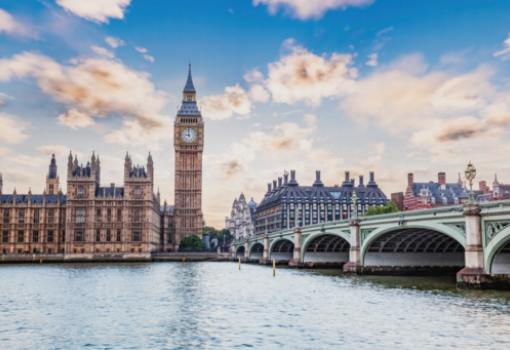Standing majestically along the banks of the River Thames, the Houses of Parliament is a true representation of neo-Gothic architecture at its finest. With its intricate detailing, towering spires, and grandiose presence, this iconic landmark has stood the test of time as a symbol of British history and politics. From significant historical events to ongoing restoration efforts, the Houses of Parliament continues to play a pivotal role in shaping the political landscape of the United Kingdom.

Architectural Features of the Neo-Gothic Design
The Houses of Parliament, also known as the Palace of Westminster, are a stunning example of Neo-Gothic architecture. Designed by architect Charles Barry and Augustus Pugin, the building features intricate details and ornate decorations that make it a true masterpiece of design. The grand façade of the building is adorned with towers, spires, and statues, creating a dramatic and imposing presence along the River Thames. The interior of the building is equally impressive, with elaborate vaulted ceilings, stained glass windows, and decorative carvings that showcase the craftsmanship of the era. The Houses of Parliament serve as a testament to the beauty and grandeur of Neo-Gothic architecture, making them a must-see destination for tourists and architecture enthusiasts alike.
Significant Events at the Houses of Parliament
The Houses of Parliament have been the setting for numerous significant events throughout their history. One of the most famous events took place on May 10, 1940, when Winston Churchill delivered his iconic speech in the House of Commons, rallying the British people during World War II. Another notable event occurred on June 23, 2016, when the results of the EU referendum were announced, leading to the decision for the United Kingdom to leave the European Union. Additionally, the annual State Opening of Parliament, where the Queen delivers the Queen's Speech outlining the government's legislative agenda, is a highly anticipated event that draws attention from around the world. These events and many others have solidified the Houses of Parliament as a central hub of political activity and history in the United Kingdom.
Restoration Efforts and Challenges
The building has faced significant damage over the years, including damage from World War II bombings and general wear and tear from centuries of use.
One of the biggest challenges in restoring the Houses of Parliament has been balancing the need to preserve its historic architecture with the need to update it for modern use. The building is a delicate mix of historical features and modern necessities, and finding a way to maintain this balance has been a significant challenge for restoration efforts.
Another challenge has been the sheer scale of the restoration project. The Houses of Parliament is a massive building with intricate architectural details that require careful preservation and restoration. The project has required a significant amount of time, resources, and expertise to complete.
Despite these challenges, restoration efforts at the Houses of Parliament have been largely successful. The building has been carefully restored to its former grandeur, with its beautiful Neo-Gothic features gleaming once again. The restoration work has ensured that the Houses of Parliament will continue to stand as a symbol of British history and politics for generations to come.
The Role of the Houses of Parliament in British Politics
The Houses of Parliament, also known as the Palace of Westminster, play a crucial role in British politics. The complex is home to the two houses of the UK Parliament – the House of Commons and the House of Lords. It is where laws are debated, created, and passed, making it the center of legislative power in the United Kingdom.
The House of Commons is made up of Members of Parliament (MPs) who are elected by the public during general elections. This house is responsible for proposing and debating new legislation, as well as scrutinizing the government's actions. The Prime Minister and the Cabinet also sit in the House of Commons, making it the primary decision-making body in the UK government.
The House of Lords, on the other hand, is made up of appointed members such as life peers, bishops, and hereditary peers. They act as a revising chamber, scrutinizing and amending legislation proposed by the House of Commons. While the House of Lords cannot veto bills passed by the House of Commons, they can delay them and suggest amendments.
The Houses of Parliament also play a symbolic role in British politics. The iconic neo-Gothic design of the complex is a visual representation of the history and traditions of the UK Parliament. The building has become a symbol of democracy and the rule of law in the United Kingdom.
Overall, the Houses of Parliament are essential to the functioning of the British government and its democratic system. They provide a forum for debate, decision-making, and accountability, ensuring that laws are made in the best interests of the British people.
